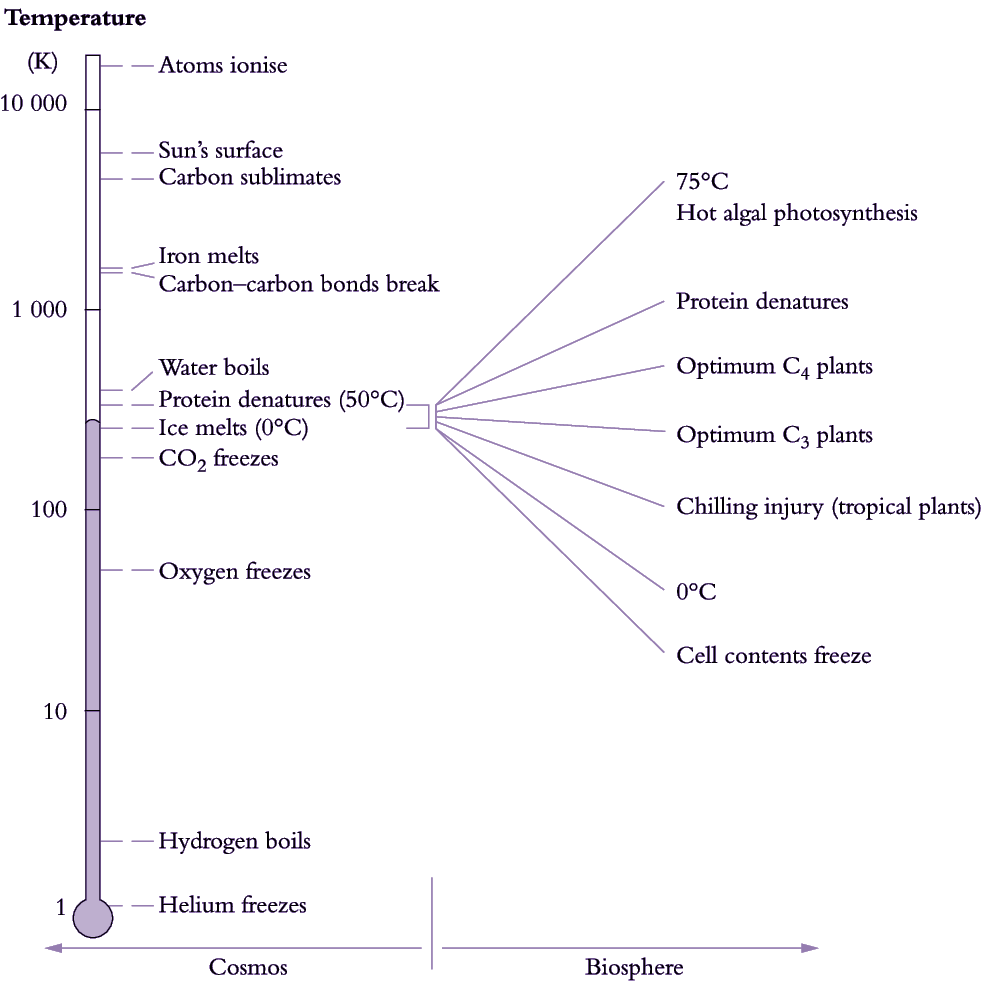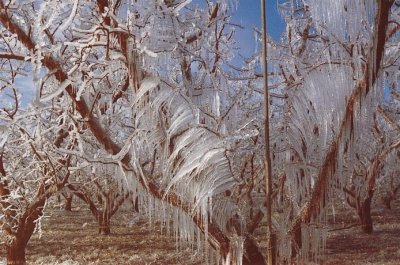Chapter editor: Rana Munns
Contributing Authors: John Angus, Owen Atkin, David Brummell, Aidan Farrell, Peter Gorsuch, EW Hewett,Vaughn Hurry, Howard Rawson
1CSIRO Plant Industry, 2Australian National University, 3Plant and Food Research NZ, 4University of the West Indies, Trinidad, 5Massey University NZ, 6Umeâ University, Sweden
This chapter is updated from a previous version by PE Kriedemann, SE Hetherington, IF Wardlaw and EW Hewett for Plants in Action 1st Edition
Life on earth is restricted to a narrow thermal band (Figure 14.1). Within that range, global conditions can still be extreme with air temperatures as low as –70°C in Antarctica and as high as +57°C in North Africa. Remarkably, life can endure those circumstances, and worse. Thermophilic bacteria exist in hot volcanic springs at +94°C and seeds, lichens and mosses may survive down to –260°C as forms of latent life. However, the temperature range for active growth in higher plants is much more modest and generally constrained between about 5°C and 45°C. The minimum temperature for active growth in tropical and subtropical plants that are chilling sensitive is from 10°C to 15°C (Section 14.4).
Fig14.1.png

Figure 14.1. Plant growth within the earth's biosphere is limited to a narrow range of temperatures compared with the overall cosmic span from absolute zero, where molecular motion ceases, to 10 000 K where atoms are ionised. Taking the life zone as spanning -5 °C to 45 °C vascular plants show remarkable thermal resilience within this range which enables them to colonise a great diversity of habitats. (Values generalised from various sources)
On a global scale (Figure 14.2) vegetation types have broad mean annual temperature ranges, from the arctic and alpine tundra at the low end of the temperature scale to tropical forests at the high end. Within this classification Australia and New Zealand cover a wide range of temperature conditions with mean annual temperatures varying from 4°C in the alpine areas of Australia and New Zealand to 28°C along the tropical northern coast of Western Australia.
Fig14.2.png

Figure 14.2. Mean annual temperatures in Australia and New Zealand range from 28°C in the north (tropical forest zone) to 4°C at higher elevations in the south (arctic and alpine tundra zone). Temperature extremes are an important factor in regulating survival and growth of many species, with periods of heat stress (>45°C) and freezing temperatures (<-2°C) common to some areas. Active growth of higher plants is normally limited to temperatures ranging from 0°C to 40°C, but many subtropical species will be chill damaged by temperatures lower than 10—15°C and many temperate species will not survive long periods of temperatures higher than 30°C. (Generalised from various sources)

